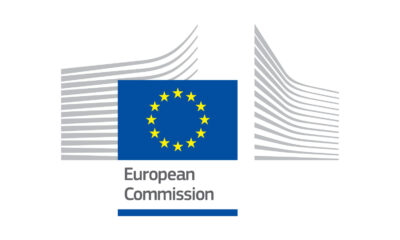Travel
2024 was a deadly year for air travel, but flying is still the safest form of transport
With the recent spate of air accidents, travellers may feel less confident. But is flying really becoming unsafe?
2024 has fanned the flames of worries over flying, particularly in recent weeks, when more than 200 people lost their lives in two separate incidents just days apart.
Thirty-eight people died when an Azerbaijan Airlines plane crashed in Kazakhstan; four days later, 179 perished when a Jeju Air flight crash landed in South Korea.
While recent events are still ringing in the minds of many, 2024 was a year of disasters in aviation. In early January, a fiery crash in Tokyo shocked the world, leaving five members of the Japan Coast Guard dead, although passengers on the Japan Airlines plane escaped safely.
Days later, part of a plane fell off when it was departing from Portland, Oregon, leaving a gaping hole in the side of the fuselage. Again, all 177 passengers survived the emergency landing, but the fallout from the event has seen major manufacturer Boeing in the spotlight all year.
During the summer the tragic loss of a Voepass flight in Brazil claimed the lives of 62 passengers and crew.
On top of this, multiple reports of aircraft hitting severe turbulence and injuring people, including one fatality on a Singapore Airlines flight, have given travellers cause to worry about their safety.
According to the Aviation Safety Network, a total of 318 people died in aircraft accidents last year, making 2024 the deadliest year in aviation since 2018.
But is flying really becoming less safe, and should we be worried if we’ve got an upcoming trip booked?
Flying is getting safer all the time
Dr Hassan Shahidi, president and CEO of Flight Safety Foundation, a non-profit involved in all aspects of aviation safety, put things in perspective for Euronews Travel.
“In all of 2023, there were zero commercial jet fatalities,” he says. “By the time 2024 was over, the aviation industry had transported 5 billion passengers worldwide. And until just the past few days, 2024 was poised to repeat that safety record.”
According to research from the Massachusetts Institute of Technology (MIT), flying is safer today than ever.
In the 2018-2022 period, the risk of dying through air travel was calculated to be 1 per every 13.7 million passenger boardings. That’s down from 1 per 7.9 million boardings in 2008-2017 and a major decrease from the 1 per every 350,000 boardings in 1968 to 1977.
Research from Embry-Riddle Aeronautical Academy has shown that up to 80 per cent of aviation accidents can be attributed to human error. A mistake on the pilots’ part is thought to account for 53 per cent of accidents, while mechanical failure was considered to be at fault in just 21 per cent of cases.
Airbus studied which part of the flight was most dangerous, and found that takeoff and landing were when accidents were most likely to occur. Both of the two December 2024 crashes happened when landing, although other factors were in play.
In the Jeju Air crash, for example, there were reports of an engine being damaged after hitting a bird, and the aircraft, for an as yet unknown reason, did not have its landing gear deployed when it touched down. The investigation will be long and complex, and it’s likely to be some time before we understand exactly what happened.
“This accident involved a multitude of factors, from bird strikes to landing without landing gear and flaps,” Shahidi adds. “All of this will be thoroughly investigated, contributing factors will be determined and steps will be taken to ensure this doesn’t happen again.”
Jeju Air has been inspecting its fleet of 737 ‘next generation’ (NG) aircraft, but out of an abundance of caution. Nothing so far suggests that there is a more widespread problem with the aircraft type.
Airlines are advised to avoid warzones
The Azerbaijan Airlines crash was something a little different. Although investigations are ongoing, initial assessments suggest the aircraft may have been hit by Russian air defences, causing it to depressurise and lose control.
That assessment will bring to mind a similar situation from a decade ago. In July 2014, a Malaysia Airlines plane was shot down by Russian-backed forces using a surface-to-air missile while it was flying over eastern Ukraine. All 283 passengers and 16 crew members died.
The investigation recommended states involved in armed conflicts close their airspace, and that operators should thoroughly assess risk when routes pass over areas of conflict.
The European Aviation Safety Agency (EASA) publishes Conflict Zone Information Bulletins to caution air operators about potential safety threats.
However, as Janet Northcote, spokesperson for EASA, explains to Euronews Travel, “EASA does not close airspace or have the right to mandate the avoidance of airspace. But the information provided here flows into the individual airline’s own safety assessments and creates awareness of any aviation safety threat.”
So why was Azerbaijan Airlines flying over a conflict zone? Although many Western airlines have ceased operations to and over Russian airspace, numerous Middle Eastern and Asian airlines continue to operate in that area.
Carriers from Turkey, China, the UAE and other nations are not avoiding the airspace, despite the risk.
“Air travel in known conflict zones has significant risk,” Shaihid says. “Airlines must carry out risk assessment for their routes to ensure that the risks are mitigated and take an alternate route.”
Nonetheless, no European airline currently flies to Russia or through its airspace, having heeded the advice of EASA and other agencies.
Every air accident makes air travel safer
The small silver lining in the terrible year aviation has experienced is that every accident serves to make air travel safer in the future.
As Simon Calder, travel correspondent for the UK’s Independent newspaper wrote in a recent column, “All the dramatic aviation events of 2024 – fatal and otherwise – will be analysed minutely to understand what can be learnt to enhance future safety.”
In the case of both the Jeju Air and Azerbaijan Airlines crashes, the infamous ‘black boxes’ have been recovered and sent for interrogation.
These two boxes, which are actually bright orange in colour, are the Flight Data Recorder (FDR) and Cockpit Voice Recorder (CVR) and should shed some light on what happened prior to the crash.
Accident investigators are on the ground in Kazakhstan and South Korea gathering more evidence, a process that could take some time. Following this, collected data will be analysed in a lab to determine the cause of the crash.
A preliminary report will likely be made public in the coming weeks, although the final report will take longer.
From these reports, various recommendations will be made to avoid a similar situation in the future.
“One of the strengths of aviation safety processes is that whenever any tragedy does occur, we analyse what happened and take appropriate action to ensure, to the extent possible, that the same type of accident will not occur again,” explains Northcote.
Consider any major aviation accident, and it’s possible to see the longer-term positive effect it has had on air safety.
A collision over the Grand Canyon in June 1956, for example, between a TWA Super Constellation and a United Airlines DC-7 led to upgraded forms of air traffic control.
After TWA Flight 800 exploded in mid-air in 1996, modifications were made to ensure fuel could not be combusted by an errant spark.
Without the tragedy of 9/11, the Transportation Security Administration (TSA) would never have been created. And thanks to the (still) missing Malaysia Airlines MH370, all aircraft are now tracked in real-time.
“This constant cycle of improvement is fundamental to keeping the aviation safety record strong,” says Northcote.
“We work with other regulators, for example the Federal Aviation Administration (FAA) in the United States and with the International Civil Aviation Organisation (ICAO), to ensure that aviation safety standards are high globally, not only in Europe.”
While manufacturers, airlines and regulators work hard to maintain safety in the skies, Northcote highlights that safe travel is a team effort.
“Aviation has in general an excellent safety record, but this is no cause for complacency,” she says. “This strong safety record can only be maintained by many individual people fulfilling their role every day to ensure that operations are safe.”
Travel
UK ETA travel permit: British dual nationals flag issues with application system
The UK’s Electronic Travel Authorisation (ETA) system has officially expanded to European travellers.
Starting 2 April 2025, all EU (except Irish nationals), EEA, and Swiss citizens need ETA approval to enter the UK.
The system became mandatory for travellers from the US, Canada and Australia on 8 January 2025, following its rollout last November for nationals of Bahrain, Jordan, Kuwait, Oman, Qatar, Saudi Arabia and the UAE.
To obtain the visa waiver, which costs £10 (€12) from today or £16 (€19) from 9 April, travellers need to complete an online process – but some British citizens with dual nationality are already flagging issues.
How to apply for the UK’s ETA visa waiver
Travellers can either use the official mobile app, which can be downloaded from the UK government website, or apply online here.
To complete the application, you need the passport you’ll be travelling on, an email address and a credit card, debit card, Apple Pay or Google Pay. You will have to answer a set of suitability questions. You don’t need to enter your travel details.
The government advises applying at least three working days before your trip.
You can delete the app when you’ve finished applying. Your ETA will be linked to your passport digitally, and you will not need to show anything else when you enter the UK.
Though it seems pretty simple, the application process has left a handful of British dual nationals confused about whether they need to apply for the visa waiver or not.
ETA application issues for British dual nationals
In theory, British citizens with dual nationality do not need ETA and should be able to travel to the UK on whatever passport they choose.
But confusion has arisen for those who don’t have a British passport because theirs is expired, lost, or they were never issued with one.
If they choose to travel on their EU passport, the process of applying for ETA – and whether it is necessary – remains unclear.
The ETA application form asks travellers to declare any other nationalities, but the drop-down menu does not give the option to select ‘British citizen’.
Should British dual nationals continue with their application without declaring their ‘secondary’ nationality, they would theoretically be forced to give misinformation about their dual nationality.
Euronews Travel posed the question to an ETA advisor from the Home Office on their web chat.
The advisor refused to give guidance about not declaring British nationality on the ETA form. They stated that if you are a dual citizen with British/Irish citizenship, you do not need an ETA.
However, “you prove your permission to travel using your valid British/Irish passport or other passport containing a certificate of entitlement to the right of abode in the UK.”
When asked what to do if the traveller is not in possession of any of these documents, the advisor responded, “You either need to apply for a British passport or a certificate of entitlement”.
Renewing a UK passport from overseas costs £101 (€123), while a certificate of entitlement comes with a £550 (€658) fee. Both application processes take several weeks.
Euronews Travel has reached out to the Home Office for official guidance.
Travel
Iceland’s Blue Lagoon spa and nearby town evacuated due to volcanic eruption
Flames and smoke shot through the air as the volcanic fissure opened near the town of Grindavik.
A volcano began erupting in southwestern Iceland on Tuesday as tourists at the nearby Blue Lagoon and residents of local communities were evacuated.
Flames and smoke shot through the air as a fissure opened near the town of Grindavík, about 50 kilometres southwest of the capital, Reykjavik, where roughly 40 homes have been evacuated, according to national broadcaster RUV.
Residents mostly vacated the community, located on the Reykjanes Peninsula, in 2023 when the volcano came to life after lying dormant for 800 years.
A swarm of small earthquakes began at around 6:30am local time on 1 April, similar to previous eruptions. The eruption just north of the protective barrier near Grindavík then began at 9:45am, according to Iceland’s Met Office (IMO).
Warning sirens started to sound when the orange-red fissure reached the town’s defence walls at around 10am. IMO has said that the fissure is now around 700 metres long, and “it cannot be ruled out that it may continue to open further south.”
Iceland sits above a volcanic hotspot in the North Atlantic and, on average, sees one eruption every four to five years.
Experts have warned that volcanic activity in the Reykjanes peninsula has entered a new era, with the frequency of eruptions having surged. This is the 11th such event to have occurred since 2021, when this new eruption period began.
Iceland’s Blue Lagoon closed until further notice
The Blue Lagoon is one of Iceland’s biggest tourist attractions. Authorities evacuated guests from the geothermal spa, moving them to nearby hotels when it became clear an eruption was imminent.
It will remain closed through 1 April, and the situation will be assessed later on, according to a message posted on the Blue Lagoon’s website. All guests with bookings during this temporary closure will be contacted.
A ‘red alert’ has been issued for the town of Grindavík, and the area around it is closed off. It will remain closed until further notice.
Travellers have been asked to respect the closures and instructions from local authorities and to stay away while conditions are being assessed, according to Safe Travel Iceland.
During previous eruptions, tourists and locals keen to see the majestic event first-hand have been repeatedly warned to stay away from Reykjanes.
Though it is yet to be updated for the most recent eruption, the UK’s FCDO says eruptions and earthquakes are common in Iceland due to the country’s nature geography.
“In the event of an eruption or wider seismic activity follow the latest advice issued by the authorities,” it says. It adds that travellers should regularly check for alerts and advice from the Icelandic Tourism Board, Icelandic Met Office, Safe Travel Iceland and the Almannavarnir Facebook Page.
The effects of the eruption are currently localised and have not caused any problems for the nearby Keflavík airport- Iceland’s main international airport.
Though ash clouds from previous volcanic eruptions in Iceland have had disrupted international air travel, this one is not expected to do so.
Travel
What is the ETA? European travellers need €12 entry permit to visit the UK starting this week
Read our full guide to the UK’s new Electronic Travel Authorisation (ETA): who needs it, how long it’s valid and how to apply.
The UK’s Electronic Travel Authorisation (ETA) system has officially expanded to European travellers.
Starting 2 April 2025, all European visitors will need ETA approval – or, for some non-EU nationals, a visa – to enter the UK.
The system became mandatory for travellers from the US, Canada and Australia on 8 January 2025, following its rollout last November for nationals of Bahrain, Jordan, Kuwait, Oman, Qatar, Saudi Arabia and the UAE.
Read on for details on cost, validity and how to get it.
What is the ETA?
The ETA replaces the single-use Electronic Visa Waiver (EVW) scheme, offering a lower cost option with multi-entry validity.
The UK government notes that it is not a visa and does not permit entry into the UK. Rather, it authorises a person to travel to the UK.
The ETA is now required for all eligible nationalities. You can find the full list of countries here.
How do I apply for an ETA to enter the UK?
Most visitors will be able to apply using a mobile app and can expect a decision emailed within three days.
Everyone travelling needs to apply, including babies and children, but you can apply for other people.
The UK government says its app is the quickest and easiest way to apply for an ETA. You can download the ETA app from the UK government website.
If you cannot download the app, you can also apply online here.
To complete the application, make sure you have on hand the passport you’ll be travelling on, an email address and a credit card, debit card, Apple Pay or Google Pay. You will have to answer a set of suitability questions. You don’t need to enter your travel details.
You can delete the app when you’ve finished applying. Your ETA will be linked to your passport digitally, and you will not need to show anything else when you enter the UK.
When to apply for your ETA
The government says: “You must apply for an ETA before you travel to the UK. You can travel to the UK while waiting for a decision.”
Considering most applicants will get a decision within three days, it can be assumed you should apply at least three ahead of travelling to the UK, though you can do it much further in advance.
How much does the UK ETA cost?
Like the Electronic System for Travel Authorisation (ESTA) in the US, a fee is attached to the application process.
The ETA costs £10 (approximately €12 at the time of writing), rising to £16 (€19) on 9 April 2025.
How long is the ETA valid?
An ETA lasts for two years. You do not need to apply again during this time.
You can travel to the UK as many times as you want during the period of validity, but you cannot stay for longer than six months on one trip. Check the UK government website for more details on what you can and cannot do on an ETA.
Note that you will need to apply for a new ETA if you get a new passport, as your ETA is linked to it.
Will I need a visa to enter the UK?
As mentioned above, the ETA isn’t a visa, but it does grant permission to enter the country.
All visitors who don’t currently require a visa will need to get an ETA before they travel. This includes those who do not currently need to submit any form of application to visit the UK. US, Canadian, Australian and European citizens need an ETA even for short stays or transiting through the UK, for example.
Travellers from countries that don’t have visa-free entry agreements with the UK will still have to apply for the correct visa and an ETA.
If you don’t apply before your trip, the government says you could be fined, though no further details have been given about this.
You still need to apply if you are transiting through the UK – even if you aren’t going through border control.
The ETA allows you to come to the UK for six months for tourism, visits to family and friends, business or short term study.
You can also get an ETA instead of a visa if you are coming to the UK for up to three months on the Creative Worker visa concession or coming to the UK for a permitted paid engagement. Outside of these conditions, you can’t use an ETA to do paid or unpaid work for a UK company or as a self-employed person.
Who does not need an ETA?
British and Irish citizens, people who already have a visa or permission to live, work or study in the UK, those travelling with a British overseas territories citizen passport and people who live in Ireland and are travelling from Ireland, Guernsey, Jersey or the Isle of Man don’t need to apply for an ETA.
Why is the UK introducing the ETA scheme?
The ETA is part of the UK’s plan to digitise its borders at UK airports by the end of 2025.
The scheme is intended to reduce queues at the border, “helping to speed up legitimate journeys to the UK”.
Facial recognition technology could be used to make these “contactless corridors” possible, British newspaper The Times reports. It would require international travellers to submit biographic and biometric details, like photos of their faces through the new Electronic Travel Authorisation (ETA) scheme before they fly.
-

 Politics7 days ago
Politics7 days agoGetting EU ready to prevent and respond to crises
-

 EU & the World7 days ago
EU & the World7 days agoCould Litia Garr Be the Next Bachelorette? Update After Grant Ellis Breakup
-

 Sports7 days ago
Sports7 days agoCivitanova closes series with Milan and joins Perugia in Scudetto semifinals
-

 Sports7 days ago
Sports7 days agoPlayoff Scudetto: Itas Trentino wins game 4 with Cisterna and flies to semifinals
-

 EU & the World6 days ago
EU & the World6 days agoInnam Dustgir’s Approach to Public Relations
-

 Sports7 days ago
Sports7 days agoMiami, Arthur fils overturns Alexander Zverev and gives Jannik Sinner a gift
-

 Sports7 days ago
Sports7 days agoVirtus Bologna blown away by Red Star: Dusko Ivanovic raises alarm
-

 Politics7 days ago
Politics7 days agoSurvey confirms Europe’s citizens want the EU to protect them and act in unity | News









